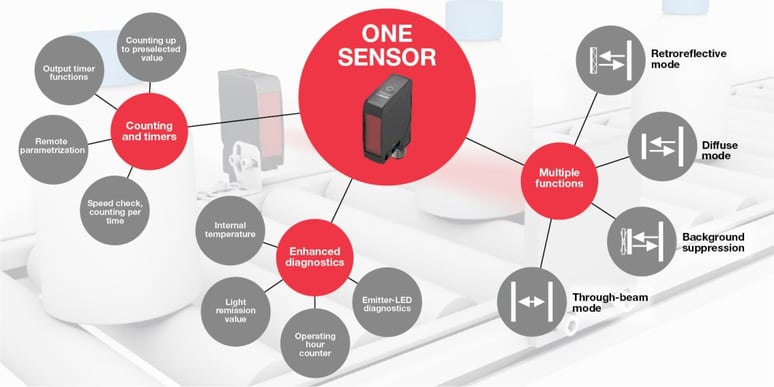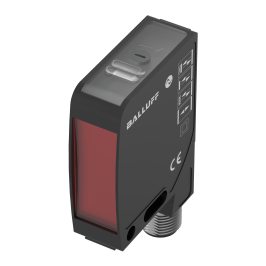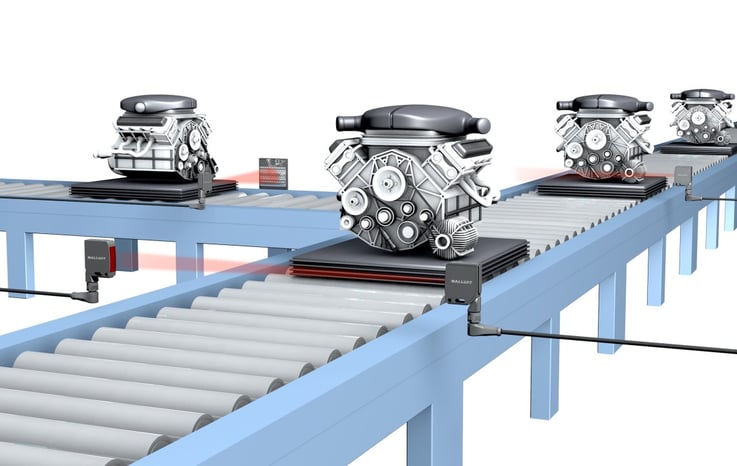Digitizing the production world in the age of Industry 4.0 increases the need for information exchange between the various levels of the automation pyramid from the sensor/actuator level up to the enterprise management level. Sensors are the eyes and ears of automation technology, without which there would be no data for such a cross-level flow of information. They are at the scene of the action in the system and provide valuable information as the basis for implementing modern production processes. This in turn allows smart maintenance or repair concepts to be realized, preventing production scrap and increasing system up-time.
This digitizing begins with the sensor itself. Digitizing requires intelligent sensors to enrich equipment models with real data and to gain clarity over equipment and production status. For this, the “eyes and ears” of automation provide additional information beyond their primary function. In addition to data for service life, load level and damage detection environmental information such as temperature, contamination or quality of the alignment with the target object is required.
One Sensor – Multiple Functions
This photoelectric sensor offers these benefits. Along with the switching signal, it also uses IO-Link to provide valuable information about the sensor status or the current ambient conditions. This versatile sensor uses red light and lets you choose from among four sensor modes: background suppression, energetic diffuse, retroreflective or through-beam sensor. These four sensing principles are the most common in use all over the world in photoelectric sensors and have proven themselves in countless industrial applications. In production this gives you additional flexibility, since the sensor principles can be changed at any time, even on-the-fly. Very different objects can always be reliably detected in changing operating conditions. Inventory is also simplified. Instead of four different devices, only one needs to be stocked. Sensor replacement is easy and uncomplicated, since the parameter sets can be updated and loaded via IO-Link at any time. Intelligent sensors are ideal for use with IO-Link and uses data retention to eliminate cumbersome manual setting. All the sensor functions can be configured over IO-Link, so that a remote teach-in can be initiated by the controller.

Diagnostics – Smart and Effective
New diagnostics functions also represent a key feature of an intelligent sensor. The additional sensor data generated here lets you realize intelligent maintenance concepts to significantly improve system up-time. An operating hours counter is often built in as an important aid for predictive maintenance.
The light emission values are extremely helpful in many applications, for example, when the ambient conditions result in increased sensor contamination. These values are made available over IO-Link as raw data to be used for trend analyses. A good example of this is the production of automobile tires. If the transport line of freshly vulcanized tires suddenly stops due to a dirty sensor, the tires will bump into each other, resulting in expensive scrap as the still-soft tires are deformed. This also results in a production downtime until the transport line has been cleared, and in the worst case the promised delivery quantities will not be met. Smart sensors, which provide corresponding diagnostic possibilities, quickly pay for themselves in such cases. The light remission values let the plant operator know the degree of sensor contamination so he can initiate a cleaning measure before it comes to a costly production stop.
In the same way, the light remission value  allows you to continuously monitor the quality of the sensor signal. Sooner or later equipment will be subject to vibration or other external influences which result in gradual mechanical misalignment. Over time, the signal quality is degraded as a result and with it the reliability and precision of the object detection. Until now there was no way to recognize this creeping degradation or to evaluate it. Sensors with a preset threshold do let you know when the received amount of light is insufficient, but they are not able to derive a trend from the raw data and perform a quantitative and qualitative evaluation of the detection certainty.
allows you to continuously monitor the quality of the sensor signal. Sooner or later equipment will be subject to vibration or other external influences which result in gradual mechanical misalignment. Over time, the signal quality is degraded as a result and with it the reliability and precision of the object detection. Until now there was no way to recognize this creeping degradation or to evaluate it. Sensors with a preset threshold do let you know when the received amount of light is insufficient, but they are not able to derive a trend from the raw data and perform a quantitative and qualitative evaluation of the detection certainty.
When it comes to operating security, intelligent sensors offer even more. Photoelectric sensors have the possibility to directly monitor the output of the emitter LED. This allows critical operating conditions caused by aging of the LED to be recognized and responded to early. In a similar way, the sensors interior temperature and the supply voltage are monitored as well. Both parameters give you solid information about the load condition of the sensor and with it the failure risk.
Flexible and Clever
Increasing automation is resulting in more and more sensors and devices in plant systems. Along with this, the quantity of transported data that has to be managed by fieldbus nodes and controllers is rising as well. Here intelligent sensors offer great potential for relieving the host controller while at the same time reducing data traffic on the fieldbus. Pre-processing the detection signals right in the sensor represents a noticeable improvement. A freely configurable count function offers several counting and reset options for a wide variety of applications. The count pulses are evaluated directly in the sensor – without having to pass the pulses themselves on to the controller. Instead, the sensor provides status signals, e.g. when one of the previously configured limit values has been reached. This all happens directly in the sensor, and ensures fast-running processes regardless of the IO-Link data transmission speed.

Industry 4.0 Benefits
In the age of Industry 4.0 and IoT, the significance of intelligent sensors is increasing. There is a high demand from end users for these sensors since these functions enable them to use their equipment and machines with far greater flexibility than ever before. At the same time they are also the ones who have the greatest advantage when it comes to preventing downtimes and production scrap. Intelligent sensors make it possible to implement intelligent production systems, and the data which they provide enables intelligent control of these systems. In interaction with all intelligent components this enables more efficient utilization of all the machines in a plant and ensures better use of the existing resources. With the increasing spread of Industry 4.0 and IoT solutions, the demand for intelligent sensors as data providers will also continue to grow. In the future, intelligent sensors will be a permanent and necessary component of modern and self-regulating systems, and will therefore have a firm place in every sensor portfolio.
To learn more about these smart sensors, visit www.balluff.com.
























